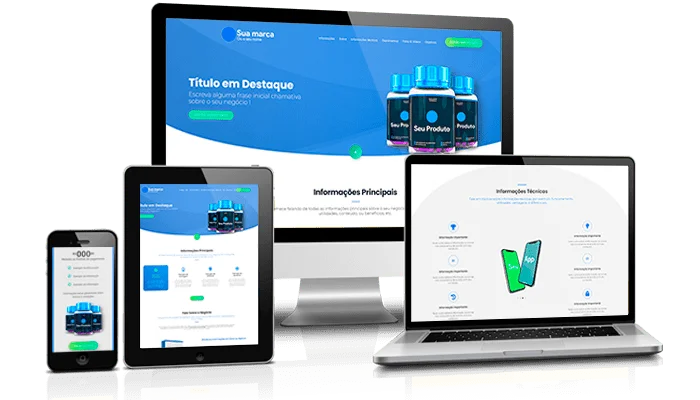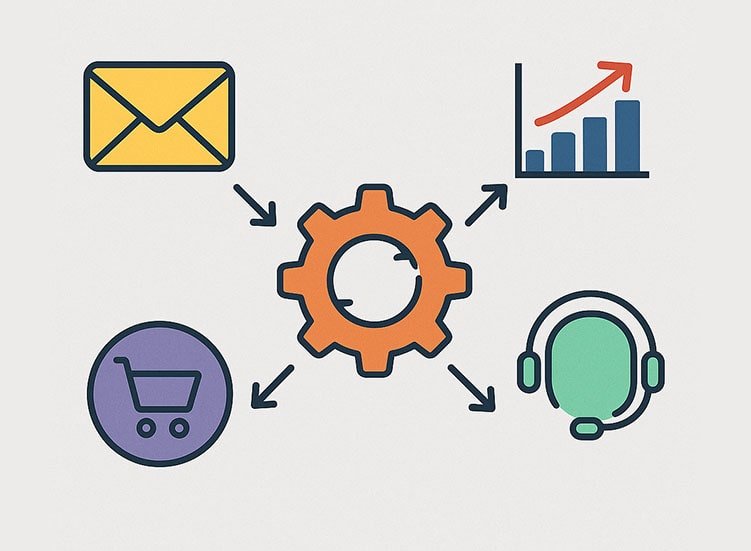Have you ever imagined making money by sharing what you know or love to do?
Today, thousands of people are discovering how to make extra income online through blogging.
What once started as a simple hobby has become a real opportunity to earn profit with freedom, creativity, and purpose.
The good news is that you don’t need to be a tech or marketing expert to start.
With the right tools and a bit of discipline, you can turn a simple blog into a profitable digital business.
The power to turn a blog into a source of how to make extra income online lies in the value you deliver to your audience.
What you need to start a profitable blog and learn how to make extra income online
Having a blog today is like running a small digital business, you need organization, identity, and purpose.
So before thinking about monetization, reflect on three essential pillars:
1. Choose the right niche
Focus on a topic you know well or enjoy learning about.
It could be personal finance, education, health, cooking, technology, fashion, or even sustainable living — the key is to create value for your readers.
Broad niches are harder to rank for, so start with a more specific focus (for example: “finance for freelancers” or “healthy eating for beginners”).
2. Create a strong content identity
Define your voice, your audience, and the type of content you want to publish: informative articles, tutorials, reviews, inspiring stories, or news about your niche.
Always maintain a consistent editorial line and a recognizable tone of voice, this helps build audience loyalty and strengthens your personal brand.
3. Invest in useful and consistent content
The key to success is consistency.
A blog grows over time as you publish regularly and build authority on your topic.
Focus on content that solves real problems and keep a steady publishing schedule (for example: one article per week).
Ways to monetize your blog and learn how to make extra income online
There are many ways to turn your blog into a source of income.
Below are the main strategies that continue to work effectively today:
1. Affiliate programs
You promote products or services and earn a commission for each sale.
Platforms like Amazon Associates, ShareASale, and CJ Affiliate are great options.
Tip: choose products that make sense for your audience.
A finance blog can promote budgeting tools, courses, or investment books; a cooking blog might recommend utensils or recipe e-books.
2. Advertising and Google AdSense
Once your blog reaches a good amount of traffic, you can display automatic ads.
Google AdSense is the most popular platform for this — you earn money for every click or impression.
The more well-ranked articles you have on Google, the greater your potential for passive income over time.
3. Selling digital products
Creating and selling e-books, online courses, templates, or spreadsheets is one of the most profitable ways to monetize.
You create it once and sell it infinitely — no inventory or shipping needed.
Turn your knowledge into digital products that solve practical problems.
4. Partnerships and sponsored posts
As your blog grows, brands may approach you to promote their products or services.
The larger and more engaged your audience, the more opportunities you’ll have for paid collaborations.
5. Lead generation and service promotion
If you’re a freelancer or consultant, your blog can serve as your online portfolio.
Use it to attract clients, showcase your expertise, and build a loyal contact base interested in what you offer.
Practical strategies to increase blog traffic and learn how to make extra income online
Generating traffic is the heart of monetization, without visitors, there are no clicks or sales.
Here’s how to increase your blog traffic consistently:
1. Learn key SEO and AI-SEO techniques and publish optimized content
- Use clear and engaging titles.
- Research the best keyword, like we did with “how to make extra income online” in this article, and include it in key parts of your post, such as the first paragraph and headings.
- Create attractive meta descriptions.
- Add internal links between your articles.
- Add external links to reputable websites related to your topic.
- Use images with alt text.
2. Promote your content on social media
Turn each article into micro-content:
- Instagram carousels.
- Threads for X (Twitter).
- Short posts for LinkedIn.
- Pins for Pinterest.
These actions expand your reach and attract new visitors.
3. Build an email list
Offer a free resource — such as a mini e-book or checklist — in exchange for the reader’s email.
This allows you to maintain direct contact and create an organic sales channel.
4. Maintain consistency
Even if you post only once a week, the most important thing is to never stop.
Consistency is the key factor for organic traffic growth.
| Tool | Main function | Free? | When to use |
|---|---|---|---|
| Canva | Create images, covers, and infographics | Yes (optional paid plans) | Quick design for posts and social media |
| Google Analytics | Track visits and key metrics | Yes | Analyze performance and audience behavior |
| Google Search Console | Monitor search visibility and indexing issues | Yes | Essential for technical SEO |
| Notion / Trello | Organize ideas and editorial calendar | Yes | Editorial planning and workflow |
| ChatGPT / AI writing tools | Generate text, ideas, and initial optimization | Free and paid versions | Drafting, titles, and SEO optimization |
| MailerLite / ConvertKit | Send newsletters and automate email marketing | Yes (paid plans for larger lists) | Lead nurturing and email-based sales |
| Hotjar / Microsoft Clarity | Heatmaps and session recordings | Yes | Understand user behavior and improve conversions |
| TinyPNG / Squoosh | Image compression | Yes | Reduce page load time |
Why a professional website structure makes a big difference when learning how to make extra income online
Many beginner bloggers underestimate the impact of a well-structured website.
A slow or poorly optimized blog can lose traffic and harm your rankings. That’s why a clean, lightweight, and SEO-ready setup is essential.
When your blog is technically optimized, you can focus fully on writing valuable content, building your audience, and discovering new ways to make extra income online through affiliate programs, ads, or digital products.
Main advantages of having a professional setup:
- Fast loading time and responsive design.
- Better indexing and ranking in search engines.
- Improved user experience (UX/UI).
- Automatic backups and security.
- Integrated tools for SEO and analytics.
- More credibility and higher conversion potential.
Hiring specialists means investing in sustainable growth and long-term results.
Action plan: 30, 60, and 90 days to start learning how to make extra income online
The following plan is designed for beginners who want to generate their first sales through affiliate marketing, which requires low initial investment and allows you to focus on building an audience.
🗓️ First 30 days: Foundation and pillar content
The first phase focuses on building your foundation and creating essential content to attract organic traffic.
-
Define your niche and affiliate program: Choose a specific niche and sub-niche (for example, instead of “Fitness,” use “Home workouts for busy moms”). Then, sign up for 1 or 2 affiliate programs that fit your audience’s needs and promote related digital or physical products (e.g., Amazon Associates, ShareASale, CJ Affiliate, ClickBank).
-
Essential technical setup: Install your blog (either on your own domain or a free platform) and connect key analytics tools such as Google Analytics and Google Search Console so you can track your performance from day one.
-
Create pillar articles: Publish 3 long, high-quality articles (at least 1,500 words). These should deliver deep, useful insights that solve your audience’s problems and attract consistent organic traffic from Google.
Why pillar content is essential
Pillar articles are the backbone of any sustainable content strategy. They are comprehensive, evergreen, and high-value posts that cover key topics in your niche in depth.
Their importance is twofold:
- Authority and SEO: They show Google that your website is an authority on the topic. Because they are extensive and detailed, they have the highest ranking potential, generating steady organic traffic and attracting high-quality backlinks.
- Conversion and audience trust: They build credibility with your readers and act as a hub that connects smaller articles. This improves navigation and allows you to insert your affiliate links in a highly relevant context — turning information into sales.
🗓️ 60 days: Audience building and conversion testing
At this stage, your goal is to increase your online presence, publish content more frequently, and begin testing how your audience interacts with your offers.
-
Publish long-tail articles: Increase your output by publishing 6 to 8 complementary posts. These should be shorter, more specific, and focused on “long-tail” keywords that answer very particular questions from your readers.
-
Integrate affiliate links: Make sure your affiliate links are placed naturally and strategically within both pillar and supporting articles. The key is to bridge your reader’s problem with the product solution.
-
Start email marketing: Create a lead magnet (a free resource like a checklist or e-book) and set up an email capture form. Building an email list is one of the most powerful assets for long-term affiliate income.
-
Consistent social media promotion: Choose 1 or 2 platforms (Instagram, TikTok, or YouTube Shorts) and create a daily or weekly content plan to promote your articles and offers, driving traffic back to your blog.
-
Test your CTAs: Experiment with different Calls to Action (CTAs) — from purchase buttons to in-text prompts — to identify what drives the most clicks and conversions.
🗓️ 90 days: Optimization, backlinks, and scaling conversions
The focus now is to optimize what’s already working to increase profits and build long-term authority.
-
Data-driven optimization: Use Google Analytics to identify your top 3–5 performing articles. Deeply optimize these posts — refine the writing, improve persuasiveness, and reposition CTAs — to boost your affiliate conversion rate.
-
Optional monetization (Google AdSense): Only consider applying for Google AdSense once your blog has steady, significant traffic (around 10,000 monthly page views or more). For most beginners, ad revenue during the first 90 days will be minimal, so your main focus should remain on affiliate sales.
-
Email marketing routine: Keep a consistent email schedule, offering real value (tips, tutorials) and occasionally promoting affiliate products.
-
Start link building (backlinks): Develop a simple outreach plan to earn links from relevant websites in your niche.
Backlinks, what they are and why they’re crucial for anyone learning how to make extra income online through a blog
Backlinks are one of the most important ranking factors for your blog — or any website that wants to grow organically, without constantly paying for ads or traffic.
If you want your blog to be discovered and ranked for free on Google, it must first appear trustworthy in the eyes of search engines.
That’s why understanding and investing in backlinks is essential.
In simple terms, a backlink is a link from another website that points to a page on your blog. Think of them as votes of confidence or recommendations: every time another relevant, reputable site links to your content, Google sees it as a signal that your blog is a valuable and reliable source of information.
This is why SEO tools (Search Engine Optimization) have developed authority metrics, like those used by Moz and Ahrefs, to measure the strength of these “votes”:
-
Domain Authority (DA – Moz or DR – Ahrefs): These scores measure the overall strength of your site. A higher DA or DR means your domain receives many high-quality backlinks, which increases your reputation and your chances of ranking well on Google.
-
Page Authority (PA – Moz or UR – Ahrefs): These metrics focus on the backlink strength of an individual page. They help estimate how well that specific page can rank for a target keyword.
The importance of investing in backlinks
Investing in high-quality backlinks means investing in your blog’s reputation and visibility. The more strong, trustworthy sites link to you, the more Google trusts your content.
This leads to better search rankings (SERP visibility), more organic traffic, and ultimately more credibility — and more opportunities to make extra income online with your blog.
How to earn high-quality backlinks
Now that you know what backlinks are and why they matter, it’s time for action. Earning backlinks takes effort and networking, but the long-term results are worth it. Here are some effective strategies to get links from other blogs and websites:
- Create unbeatable content (link bait): The most organic way to earn links is to publish the best content available on a given topic. Write original case studies, in-depth research, unique data, detailed infographics, or ultimate guides. If your content is the best reference on the subject, other websites will naturally link to it.
- Guest posting: Offer to write a high-quality guest article for another blog or website that’s relevant to your niche. In return, you’ll be allowed to include one or two backlinks to your own blog — either in the author bio or within the article itself.
⚠️ Attention:
The following task suggestions are meant for when you’re already in a more advanced and professional stage — you don’t need to worry about them at the beginning.
- Broken link building: Identify broken links ($404$) on websites related to your niche. Contact the site owner, let them know about the broken link, and suggest one of your own blog posts as a relevant replacement.
- Unlinked mentions: Use online monitoring tools to find places where your blog or name has been mentioned without a direct link. Politely reach out to the author and ask them to turn the mention into a backlink.
- Competitor analysis: Use SEO tools to check which websites are linking to your direct competitors. This reveals valuable opportunities and allows you to replicate successful strategies by reaching out to the same sources for backlinks.
❓ (FAQ) Frequently asked questions about how to make extra income online through a blog
It depends on your posting frequency and strategy. On average, blogs start making a profit within 6 to 12 months when content is consistent and optimized.
Not necessarily. It’s possible to start with low costs and gradually invest. However, having a well-built website can help speed up results.
Create posts that solve real problems, encourage comments, share authentic stories, use calls-to-action (CTAs), ask for readers’ opinions, and motivate them to leave feedback.
Personal finance, education, health, digital marketing, technology, and agriculture are among the most profitable niches in 2025.
Yes. A blog offers flexibility, you can create content on weekends and still gradually build a source of extra income online over time.
Conclusion on how having a blog can generate extra income online and open paths to financial freedom
Turning a blog into extra income online is more than a digital project — it’s a path to living with more autonomy and purpose.
With dedication, quality content, and effective strategies, you can build an online asset that grows over time and continues generating results, even while you sleep.
Remember: investing in a solid foundation with a well-developed website is what separates amateur blogs from real digital businesses.
🔗 Want to keep learning about how to make extra income online?
Also read our other article:
👉 Creating children’s e-books 6 steps to create and sell using artificial intelligenceHow to create and sell children’s e-books using artificial intelligence
Click here for more content about Professions & Entrepreneurship.








